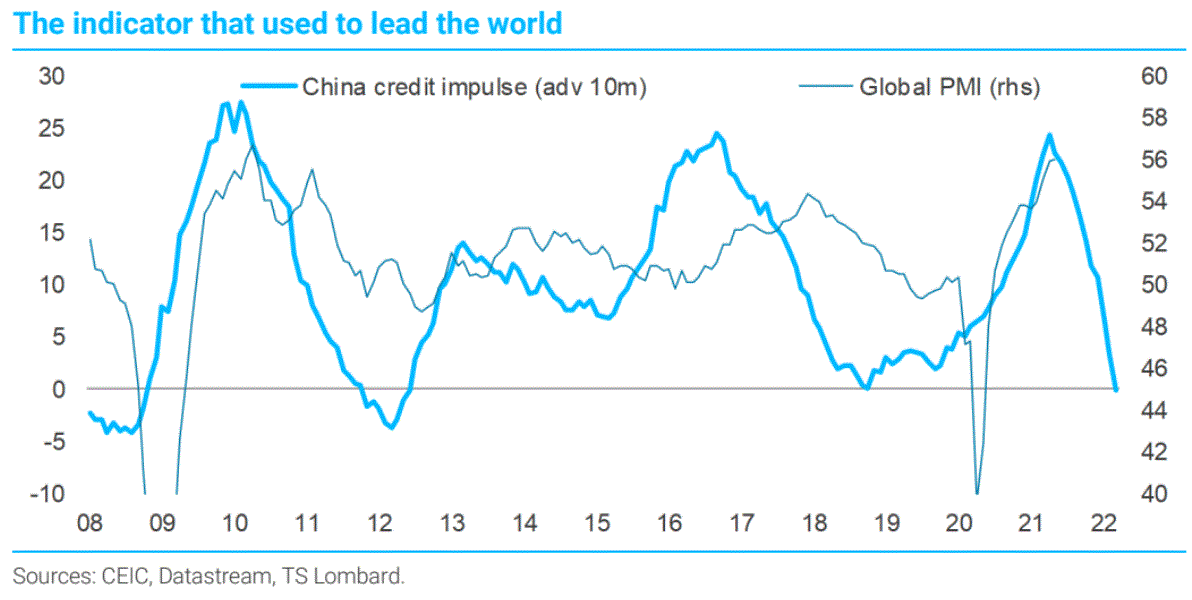China’s credit impulse is not dead so far as commodity prices are concerned. But in terms of structural changes I agree with TSLombard that the US will be the engine and China the caboose in the cycle to come:
There was a time when China’s credit impulse was the most important piece of data in global macro. For almost a decade, the country has been locked in a stop-go policy pattern, with every oscillation in China’sdomestic monetary/fiscal stance eventually producing powerful swings in the broader global industrial cycle. To be precise, if China tightened, the world could expect a deflation scare, typically around8-10 months later. If the authorities eased, “reflation” would become the big theme. The problem with this correlation is that nobody understood why it had become so compelling–it seemed to go far beyond traditional trade links, including China’s role as a source of final demand. When we investigated this topic a few years back, we put it down to“indirect” linkages, including via investor sentiment, financial channels (e.g. global equity exposure) and capex. But perhaps there was a simpler story–with the developed economies suffering secular stagnation and central banks powerless to stimulate demand, China had become the world’s main source of “balance sheet”. By adding 30% of world GDP to the CCP balance sheet, the country had become the marginal source of demand for the entire global economy. But this leaves a problem–because China no longer wants to play this role.

Beijing has adjusted its economic objectives and is now less willing to engage in big credit stimulus. Central authorities understand that continued rapid debt build-up poses a risk not just to future growth, but social stability and national security as well. Since 2017, the Party has shifted focus from credit-fuelled expansion to an emphasis on slower sustainable development. Cracking down on shadow banking, tackling legacy debt burdens and removing explicit GDP targets. We don’t need to dig deep into CCP rhetoric to uncover the shift, actions speak louder than words. During the Trade War Beijing maintained a hawkish bias to monetary policy and a tight rein on government spending. In 2020, China covid stimulus was 3% of GDP (vs 13% in 2008), compared to 10% of GDP in the US, 16% in Germany and 14.5% in France. China’s stop-go policy cycle is still there, but the threshold for intervention is higher and the scale of stimulus is likely to be smaller.

